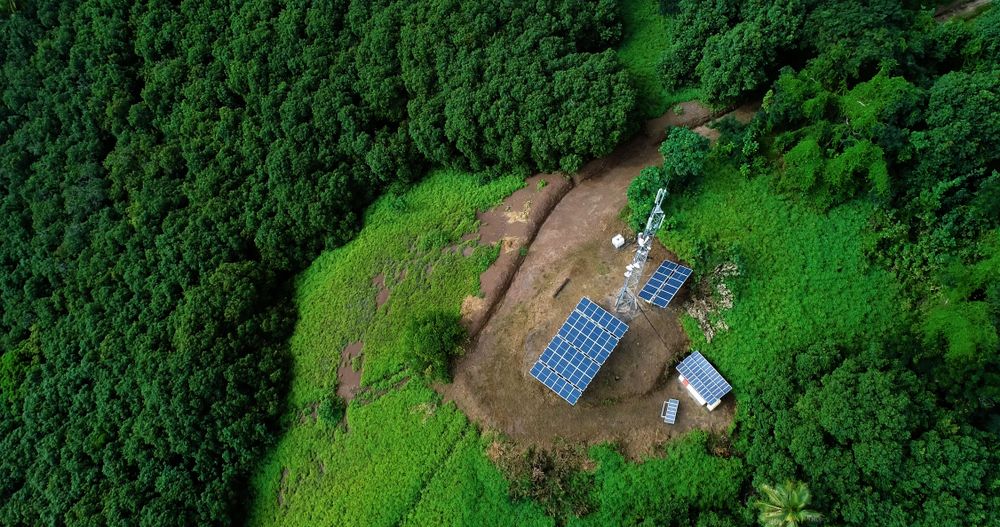
Can telecom networks go green?
By ITU News
Network operators are increasingly well-positioned as the infrastructural linchpin for countless digital technologies, from 5G to the Internet of Things.
The demand for data traffic and connectivity has skyrocketed – especially amid the ongoing COVID-19 pandemic. With the world’s climate crisis also worsening, operators face the challenge of slashing their carbon emissions while meeting customer needs and maintaining revenue growth.
But what exactly makes a telecommunications network “green” in the first place?
A recent online roundtable held by TelecomTV – a multimedia channel aimed at the global communications sector – examined the question further.
Defining the green network
Energy consumption, renewable energy sources, and a carbon reduction strategy are the three vital elements that must work in tandem for a network to be considered green, according to Robert McCann, Head of Environment, Climate and Nature at British mass media and telecoms company Virgin Media O2.
Lauren Ing, Managing Director for the Sustainability Strategy of management consulting firm Accenture suggested a fourth element, saying: “The connectivity potential of the network through manufacturing, for example, or transport, can enable carbon reductions in those sectors as well.”
Many operators have started investing in renewable energy sources as a core part of their corporate strategy. The energy mix in the countries where networks operate may also influence each company overall “greenness”, explained Ana Maria Galindo Serrano, Telecoms Engineer at Orange Labs Networks and co-lead of the Green Future Networks project at the NGMN (Next Generation Mobile Networks) Alliance.
NGMN Alliance CEO Anita Dohler added:
“Energy consumption is directly linked to an operator’s greenhouse gas emissions, but the definition of a green network goes beyond this. We also need to consider the impact of our value chain on resources like land and water.”
Purchasing and procurement processes should include clear, stringent sustainability criteria, she added. “The eco design of products is important to consider.”
Making it measurable
Quantifying the impact of green initiatives is equally important. Energy intensity – or the amounts of energy needed to operate a network – is measurable in several ways, including consumption per customer and per data volume. Other key indicators include renewable energy shares, percentages of refurbished network equipment, and the network’s overall carbon intensity.
Last year, the NGMN Alliance recommended the integration of circular economy principles and life-cycle assessment methods into the procurement process of all mobile network operators and equipment manufacturers.
Standards developed through global consultation at the International Telecommunication Union (ITU) provide valuable models for the industry to follow, Dohler said.
Examples include standards L.1023 (Assessment method for circular scoring), L.1410 (Methodology for environmental life cycle assessments of information and communication technology goods, networks and services), and L.1470 (Greenhouse gas emissions trajectories for the information and communication technology sector compatible with the UNFCCC Paris Agreement) from the ITU’s standardization arm (ITU-T).
Metering solutions can help operators monitor and optimize their energy intensity, on-site renewable power production, and the power consumption of specific devices at the local site level. Data on temperature and humidity can add further insights.
“These metrics help us implement optimization systems to reduce the electricity consumed by networks, predict maintenance, and even apply machine learning methods to continue optimizing consumed electricity,” said Serrano.
A bottom-line boon?
Green network strategies can have a sizeable impact on an operator’s bottom line – especially in terms of operating expenses.
Orange saved more than EUR 170 million (USD 190 million) in 2020 thanks to the prior implementation of green features, according to Serrano.
“We were also able to control the growth of network electricity consumption despite growth in [network] traffic,” she added.
The same metrics can also help inform customers about the impact of connectivity services.
“We’re seeing significant demand from our business customers to understand the impact of our end-to-end network service on their own carbon footprint,” said McCann.
“The public sector also wants a measurable understanding of our input to their Scope 3,” he added, referring to the corporate value chain and emissions from activities or assets not owned or controlled by the reporting organization.
How to green your network
To cut emissions, suggested McCann, telecom operators need to:
- Invest in energy efficiency to deliver more data and services with a lower footprint.
- Source renewables and consider on-site power generation.
- Adopt a net-zero plan grounded in science.
But operator sustainability also depends on customer premises equipment (CPE) – the hardware used in people’s home and office networks. “CPE impact [also] counts towards our Scope 3 indicator,” said Serrano.
Initial manufacturing represents around 80 per cent of the carbon emissions for a mobile device, she added.
However, upcycling existing devices through intelligent cloud services lets people keep using the same ‘boxes’ for up to seven years, instead of the typical two to three, said Niall Robinson of Plume Design, Inc.
Evaluations aimed at covering the industry like the Eco Rating scheme define and measure the environmental impact of handsets, which operators can then present to customers at the point of sale. “It’s a great opportunity for customer-facing network businesses to provide a choice to customers and drive change throughout the industrial supply chain,” said McCann.
International standards for ‘environment, climate change and circular economy’ are developed by ITU-T Study Group 5.
Image credit: Shutterstock
